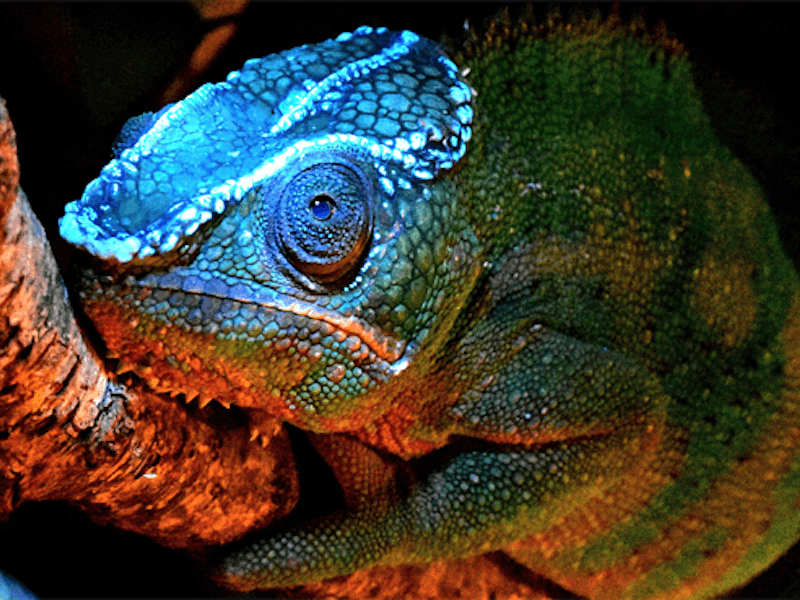Chameleon Bones Glow in the Dark Like Radioactive Death Sticks
And you can see them through their skin!

Chameleons are like little aliens that live here on Earth. They catch prey insects with their big, gloopy tongues and famously change their skin color to blend into their surroundings. Now, you can add glowing bones to the list of alien characteristics. And not only do their bones glow under ultraviolet light, you can see it through their dang skin!
In a paper published Monday in the journal Scientific Reports, a team of German researchers describe the anatomy of chameleons’ fluorescent bones, as well as how it differs across sex and species. The paper’s authors explain that the fluorescent bones we can see from the outside of a chameleon are tubercles of bone that jut out. The skin over these tubercles is much thinner than the rest of the animal’s skin, consisting of just a transparent epidermis, allowing the bones’ glow to emanate through.
Doctors have known for a long time that bones glow under UV light, which has helped forensic investigators when looking for bone fragments and such, but the researchers report that this is the first known instance of visible bone fluorescing through the skin of a vertebrate.
Photos A through D were taken under UV light, and E through G were taken under fluorescent light
So how the heck do the chameleons’ bones glow? Pretty much the same way as anyone else’s would: The proteins in bone collagen reflect specific wavelengths of light, which makes them appear to glow under ultraviolet lights. The main difference is that chameleons have these very thin layers of skin to show off their radiating bones. So it’s not like they evolved some new way to glow, just a new way to show it off.
In the top right part of this image, you can see how thin the chameleon's skin gets where the tubercle protrudes.
Okay so we know what is happening, but why do chameleons have glowing bones sticking up?
The paper’s authors suggest that these glowing tubercles may be related to sexual attraction and signaling since males appear to have more of the tubercles than females do. Scientists have long known that the bony crests around chameleons’ heads are sexually dimorphic, as well as different among various species, but this research suggests that the tubercles may have a hidden function.
“It is probable that their function is similar to ornamentations used by other taxa for species recognition and intraspecific signalling and communication,” they write. Since chameleons are so good at blending into their surroundings, it makes sense that they’d also have developed a way to see each other.
Abstract: Fluorescence is widespread in marine organisms but uncommon in terrestrial tetrapods. We here show that many chameleon species have bony tubercles protruding from the skull that are visible through their scales, and fluoresce under UV light. Tubercles arising from bones of the skull displace all dermal layers other than a thin, transparent layer of epidermis, creating a ‘window’ onto the bone. In the genus Calumma, the number of these tubercles is sexually dimorphic in most species, suggesting a signalling role, and also strongly reflects species groups, indicating systematic value of these features. Co-option of the known fluorescent properties of bone has never before been shown, yet it is widespread in the chameleons of Madagascar and some African chameleon genera, particularly in those genera living in forested, humid habitats known to have a higher relative component of ambient UV light. The fluorescence emits with a maximum at around 430 nm in blue colour which contrasts well to the green and brown background reflectance of forest habitats. This discovery opens new avenues in the study of signalling among chameleons and sexual selection factors driving ornamentation.